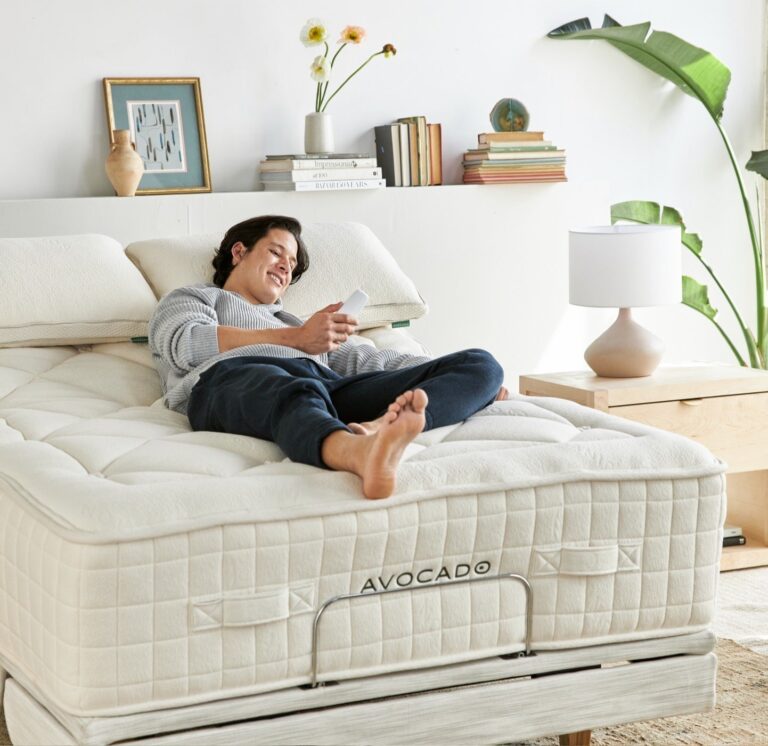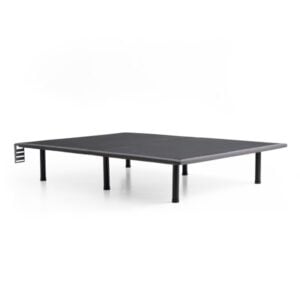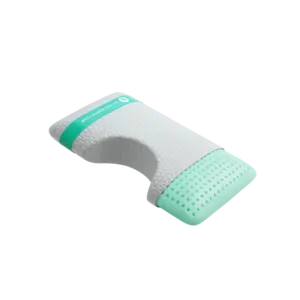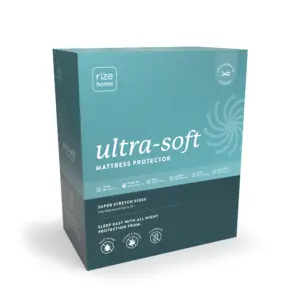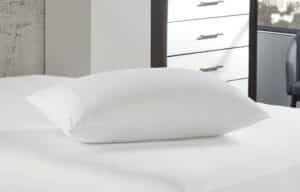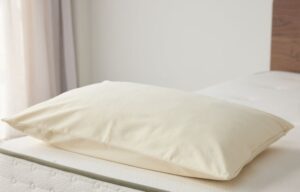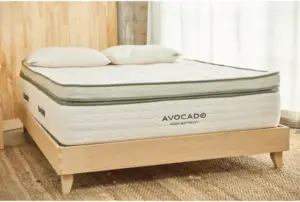Everything You Need to Know About Using a Regular Mattress on Adjustable Beds
Understanding the Compatibility Between Adjustable Beds and Regular Mattresses
Can you use a regular mattress on an adjustable bed? This is a frequent question among those venturing into the world of adjustable bases or considering an upgrade. Here’s a straightforward answer:
Yes, many regular mattresses can be used with adjustable beds, but not all are suitable.
Key Compatibility Points:
– Memory foam, latex, and hybrid mattresses with individually pocketed coils are generally compatible.
– Innerspring mattresses with interlocked coils usually do not work well.
Adjustable beds have gained popularity for their ability to enhance sleep quality and deliver various health benefits. With the capability to adjust to multiple positions, they provide improved back and spinal support, alleviate conditions such as sleep apnea and arthritis, and even enhance overall posture.
I’m Ben Trapskin, the creator of Yawnder. My passion for sleep health and my personal experiences navigating mattress options have inspired me to assist others in finding solutions that truly meet their sleep needs. Let’s dive into everything you should know about using a regular mattress on adjustable beds.
Can You Use a Regular Mattress on an Adjustable Bed?
The short answer is: it depends. Not all mattresses are created equal, and their compatibility with adjustable beds varies. Here’s a breakdown of the different types of mattresses and their suitability for adjustable bases.
Memory Foam Mattresses: A Great Fit for Adjustable Beds
Memory foam mattresses have become a favored option for adjustable beds due to their adaptive nature. These mattresses conform to your body’s shape, offering excellent motion isolation. This quality is especially beneficial if you share your bed with someone who tends to move around during the night.
Types of Memory Foam:
– Traditional Memory Foam: Offers solid support but may retain heat.
– Open-Cell Memory Foam: Designed to enhance airflow, reducing heat retention.
– Gel Memory Foam: Infused with cooling gel particles to help maintain a comfortable temperature.
Advantages:
– Excellent spinal alignment
– Superior motion isolation
– Durable
Disadvantages:
– Heat retention, particularly with traditional foam
– Some may find the sinking sensation uncomfortable
Latex Mattresses: Supportive and Responsive
Latex mattresses also pair well with adjustable beds, known for their bounce and elasticity. They react quickly to body movements and do not hug the body as tightly as memory foam.
Types of Latex:
– Natural Latex: Derived from rubber trees, offering an eco-friendly option.
– Synthetic Latex: Made from petrochemicals, usually more affordable but less durable.
– Blended Latex: A combination of both, balancing cost and durability.
Advantages:
– Highly durable
– Effective pressure relief
– Good motion isolation
Disadvantages:
– May be too firm for some sleepers
– Typically more expensive
Hybrid Mattresses: The Best of Both Worlds
Hybrid mattresses combine the support of innerspring coils with the comfort of foam. By incorporating layers of memory foam, latex, or gel, they offer flexibility suitable for adjustable beds while maintaining coil support and temperature regulation.
Advantages:
– A balanced approach to comfort and support
– Effective temperature regulation
– Flexible for adjustable bases
Disadvantages:
– Generally more expensive
– Heavier than other options
Innerspring Mattresses: Limited Compatibility
Innerspring mattresses are the most traditional type and often recommended against for adjustable bases unless they feature pocketed coils. The individually wrapped springs in pocketed coils allow for greater flexibility.
Advantages:
– Good support and spinal alignment
– Usually more budget-friendly
Disadvantages:
– Tend to be too rigid for adjustable beds
– Higher wear and tear risk
– Compatibility issues with older or low-end models
In conclusion, while you can use a regular mattress on an adjustable bed, memory foam, latex, and hybrid mattresses are preferable due to their flexibility and durability. Innerspring mattresses might work with pocketed coils, but they typically offer less compatibility.
Benefits of Using an Adjustable Bed
Pain Relief and Spinal Alignment
Adjustable beds can transform sleep quality for those grappling with back and joint pain. By allowing for customized sleeping positions, they help reduce pressure points and promote better spinal alignment. Elevating your upper body can relieve lower back pressure, while lifting your legs can enhance circulation and reduce swelling—a boon for individuals with arthritis.
Fact: Research from the Sleep Foundation indicates that adjustable beds can significantly diminish back pain and enhance sleep quality.
Sleep Apnea and Insomnia
If sleep apnea or insomnia plagues you, an adjustable bed could be your solution. Elevating the head can relieve airway pressure, making breathing easier and potentially reducing snoring, thus improving sleep quality for both individuals and their partners.
A clinical trial reported a 67% success rate in reducing snoring with elevated upper body positions. For insomniacs, customizable positions help ease into sleep, whether you’re reading or watching TV before drifting off.
Arthritis and Improved Posture
Individuals with arthritis often struggle to find a restful sleeping position, but adjustable beds offer a practical solution. By elevating either end of the bed, joint pain can be reduced, facilitating easier entry and exit from bed.
Moreover, adjustable beds support your spine’s natural curve, promoting healthier posture even while you sleep, lessening morning stiffness and enhancing overall mobility.
How to Determine if Your Mattress is Compatible
1. Mattress Flexibility
Flexibility is essential in determining whether a regular mattress can be used on an adjustable bed. The mattress should bend and flex without compromising comfort. Memory foam and latex are excellent choices, and hybrid mattresses with pocketed coils may work as well, provided they possess sufficient flexibility.
2. Manufacturer Guidelines
Always check the manufacturer’s guidelines to verify compatibility. Most manufacturers will specify whether their products are suitable for adjustable bases, usually found in product specifications or online. If in doubt, contact customer support for clarification.
3. Mattress Thickness and Firmness
Optimal mattress thickness for adjustable bed compatibility is generally up to 12 inches. Thicker mattresses may not bend as well, negatively affecting both your comfort and the bed’s performance. Aim for a balance of support and flexibility; a mattress too firm may not flex properly, while one that’s overly soft might lack adequate support.
In summary, examining flexibility, manufacturer guidelines, and ensuring appropriate thickness and firmness are vital in choosing the right mattress for your adjustable bed.
Disadvantages of Using an Adjustable Bed
Cost and Maintenance
Adjustable beds represent a considerable investment, often costing more than traditional options. In addition, the technology within adjustable beds may involve ongoing maintenance costs—motors and moving parts may need repairs or replacements over time.
Noise and Weight
Motor noise is a common concern with adjustable beds, potentially disrupting sleep. Additionally, their increased weight makes them harder to move, whether you’re rearranging your space or relocating.
Unique Size and Cleaning Difficulties
Many adjustable beds require specialized sheets. Regular sheets may not fit properly due to the bed’s design. Furthermore, cleaning can be challenging, given the mechanisms involved. You’ll likely need to ensure extra protection for the mattress to avoid damage from movement.
In summary, while adjustable beds offer numerous benefits, they do come with drawbacks such as higher costs, maintenance needs, noise, weight, and cleaning complexities. Consider these factors before deciding if an adjustable bed is right for you.
Frequently Asked Questions About Using a Regular Mattress on an Adjustable Bed
What Type of Mattress is Best for Adjustable Beds?
Memory foam, latex, and hybrid mattresses are the top choices due to their inherent flexibility and durability.
– Memory Foam: Excellent at molding to your body, though traditional varieties can retain heat. Opt for gel-infused or open-cell memory foam for a cooler sleep experience.
– Latex: Renowned for its responsive nature and pressure relief, available in natural and synthetic forms to cater to various needs.
– Hybrid: Combining foam and springs, hybrids deliver balanced support and flexibility. Ensure they include pocketed coils for best compatibility.
Do You Need a Special Bed Frame for an Adjustable Bed?
Indeed, you might need to adjust or replace your current frame to properly accommodate an adjustable bed.
– Standard Panel Bed Frames: Often adaptable, but you may need to remove slats for compatibility.
– Headboards and Footboards: Most adjustable beds can fit within standard frames, allowing you to retain your headboard or footboard.
– Rails: Ensure that the rails work well with your adjustable base; some come with their own set.
Can Adjustable Bases Damage Mattresses?
Using an incompatible mattress on an adjustable base can lead to various issues, including accelerated wear and tear. A mattress unsuited for flexibility may not withstand the movement, leading to sagging and reduced lifespan. Ensuring your mattress is compatible will help maximize its performance and longevity.
In conclusion, using the right mattress with your adjustable bed can radically enhance your sleep experience. A compatible mattress can help provide proper spinal alignment, reduce pain, and ensure comfort throughout the night.
At Yawnder, we understand how daunting it can be to select the ideal mattress for your adjustable bed. Our expert evaluations and years of experience aim to guide you toward the best options for your unique sleep needs. Whether you opt for memory foam, latex, or hybrid styles, we’re committed to offering you the insight you need to make an informed choice.
For more details on finding the perfect mattress for your adjustable bed, visit our Adjustable Beds page. Let us assist you in achieving the sweetest dreams and profound comfort.

